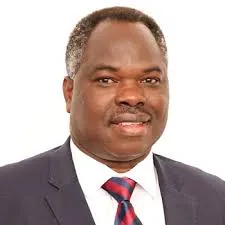Three years ago this month, thousands of Zambians flocked into Lusaka’s National Heroes Stadium to celebrate the inauguration of President Hakainde Hichilema, whose landslide election victory had been built on the promise of growing the economy, creating jobs, and lifting citizens out of poverty.
At the time Zambia’s economy was making headlines for all the wrong reasons. In late 2020 it became Africa’s first coronavirus-era sovereign default. By the time of the 2021 elections, inflation stood at well over 20% and Zambia owed more than $17 billion to foreign lenders, with a large portion of that debt hidden from the public accounts.
The country’s future looked bleak. The mining sector, which accounts for over 70% of total export earnings, 30% of government revenues and 8% of formal employment, was in disarray and the outgoing government’s heavy-handed approach to the industry had seriously spooked investors. While Zambia had long been considered a bastion of stability and progress in the region, its reputation had suffered a serious blow.
Fast forward three years and Zambians once again have good reason to be optimistic about the future. In 2023 the Zambia Development Agency (ZDA) recorded US$39.97 billion in pledged investments – up from US$8.11 billion in 2022 and US$3.3 billion in 2021. The number of jobs committed has also risen dramatically, from 24,585 in 2021 to 160,280 in 2023. As President Hichilema told the European Parliament in 2022, “Zambia is back in business”.
More investors are putting more money in, not just in the mining sector but also agriculture, manufacturing, energy, tourism and infrastructure. Of the US$39.97 billion pledged by investors last year, manufacturing accounted for US$19.72 billion, followed by energy at US$8.9 billion. Investment came from all over the world, from the US to China and from the UK to the UAE.
This turnaround has been achieved through a combination of measures: a mixture of practical reforms and ambitious initiatives designed to drive economic activity and diversify the country’s economic base, while at the same time playing to its strengths and seeking to leverage global trends such as the green energy transition.
President Hichilema has set an ambitious target of increasing copper production to 3 million tonnes annually over the next seven years. This gauntlet that has been picked up by major mining houses such as Mopani Mines and Konkola Copper Mines, who are ramping up production in response to growing demand for copper in industries like electric vehicles.
The President is also seeking to positon Zambia as the breadbasket of southern Africa, transforming more than one million hectares of the country into agricultural land through an innovative farm block program that would help feed the 500 million population of Zambia and her neighbours.
The foundation for everything, however, is good leadership. President Hichilema, who made his name in business before turning his hand to politics, refers to himself as the country’s Chief Marketing Officer. Investors have responded positively to the transparent and consistent policy environment he has fostered, as well as efforts to more actively engage and consult business through initiatives such as the Public Private Dialogue Forum (PPDF) and the Presidential Delivery Unit( PDU).
President Hichilema has been steadfast in prioritising the stabilisation and improvement of the economy so that government can increase spending on public services and raise citizens’ living standards. Over the past three years a huge amount of energy has been channelled into tackling Zambia’s debt – and with good reason. Not only did the 2020 debt default seriously damage Zambia’s reputation among investors but critically between 2018 and 2021 debt repayments increased from 20% to 38% of the national budget, while the allocation to areas such as health and education fell.
In August 2022 the government secured an agreement with the International Monetary Fund (IMF) for a US$ 1.3 billion extended credit facility which has recently been increased to around US$1.7 billion. Government has since restructured US$13.6 billion in debts, cut US$ 900 million from the total and spread payments over a longer time period to ensure the country has a sustainable route forward that gives it the space to invest in public services.
Meanwhile, a robust programme of business reforms and support systems has been rolled out, from boosting market access for local exporters to aboliting double taxation in the mining sector, and launching online applications for both local and international investments through the ZDA.
Hichilema’s government has also positioned the country for long-term, sustainable growth, clamping down on endemic corruption and introducing free education for all primary and secondary school children to become the business leaders and entrepreneurs of tomorrow.
Those who follow Zambia’s progress closely will know that despite all this progress, 2024 has brought unprecedented challenges for the country in the form of an historic drought. This is one of the biggest natural disasters to hit Zambia in modern times, not only threatening food security for more than a million households but also creating challenges in the energy sector, given the prominence of hydropower in our supply.
As the saying goes you should ‘never let a crisis go to waste’ and government has quickly responded by rolling out a raft of measures that are designed to not only alleviate pressure on struggling citizens but also to make the country more resilient against future disasters. These strategies range from promoting early maize cultivation and drought resistant crops, to removing import duty and VAT on solar equipment, as well as fast-tracking large-scale solar plants like the 100MW Chisamba Solar Project in Central Province.
Once again, we are confident that good leadership will see us through this crisis and that the end result will be more sustainable and resilient agriculture and energy sectors that are ready to meet the challenges of tomorrow. There is still much to do in the remaining two years before Zambia’s next general elections and so this momentum must be maintained at all costs. After all, we have a fast-growing population, so strong economic growth and job creation are essential. Today, however, it is worth recognising just how far Zambia has come since we re-opened for business.
Want to continue reading? Subscribe today.
You've read all your free articles for this month! Subscribe now to enjoy full access to our content.
Digital Monthly
£8.00 / month
Receive full unlimited access to our articles, opinions, podcasts and more.
Digital Yearly
£70.00 / year
Our best value offer - save £26 and gain access to all of our digital content for an entire year!

 Sign in with Google
Sign in with Google 



